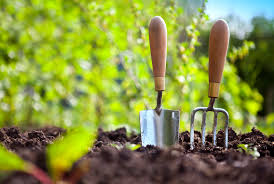The strawberry and the rotary harrow are agricultural tools intended to loosen, crumble and mix the ground for the preparation of seedlings. They are driven and towed by the PTO of agricultural machinery such as the tractor, tiller, quad or micro-tractor. Tillage, to be successful, however requires the use of appropriate and quality tools. Here are some tips for choosing the most suitable harrow or rotary tiller with some features to take into account.
What are the specifics of rotary tillers and harrows?
Rotary tiller: it is mainly used to bury unwanted elements in the soil such as plant debris or small stones after plowing. Sometimes it is also used to turf the soil and to graze the products intended for silage. This hydraulic tool consists of “hoes”, also called “radial knives” or “teeth” which are mounted on a horizontal axis. It can be easily adjusted to obtain various working depths and various finishing results. In general, the working depth does not exceed 25 cm while the rotational speed of the cutters is generally 270 revolutions per minute for quality work. When it comes to the rototiller for tractor then you will be having the best choices right there.
The rotary harrow
It is generally used for the surface tillage, the preparation of seedbeds and the leveling of plowed plots. It has a number of rotors, each of which is fitted with two teeth. These can measure between 30 to 33 cm for standard teeth and up to 40 cm for long teeth. Mounted slightly inclined with respect to the vertical, these teeth can be of round, square or triangular section. The working depth, which is controlled by a roller placed at the rear of the work, fluctuates from 8 to 10 cm in preparation for the seed bed.
What are the advantages of rotary tillers and harrows?
- For deep work as well as faster turning of the soil,
- Allows easy coupling and storage,
- Improved surface water absorption,
- Great versatility: allows to carry out different soil work,
- Possibility of coupling with a seed drill or subsoiler,
- Ecological alternative for chemical weeding,
- Good leveling job,
- Possibility of coarse or very fine crumbling,
- Soil and organic matter are well mixed,
- Allows good germination.
- Herse rotative
What are the criteria for choosing rotary tillers and harrows?
The first thing to look at closely when choosing a power harrow is the shape of the teeth. Round and square teeth are for example very resistant to stones, which means that the clods are crumbled generally by impact. Being very fine, the tapered teeth require less tractive effort. However, they are less resistant to stones. As for the so-called “leaky” teeth, they are the most commonly used because of their high section which guarantees a long service life.
To work from the bottom up, it is also possible to integrate leading teeth. Allowing to reduce the erosion effect of the ground, this type of tooth is ideal for simplified sowing on stubble cultivation and the destruction of meadows.




